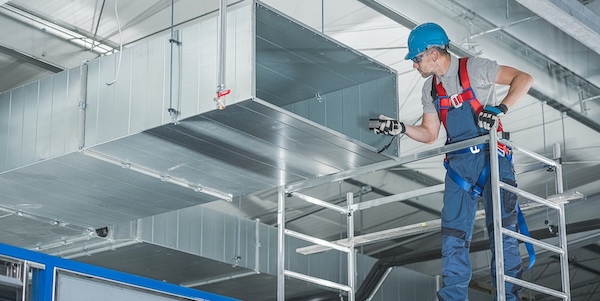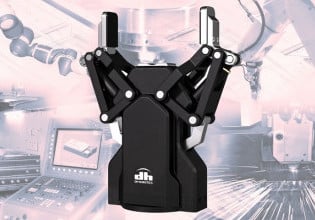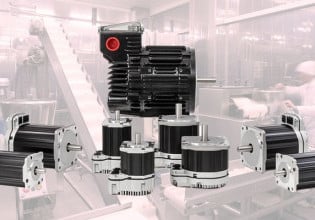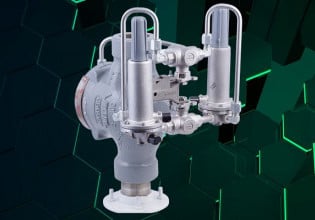Common Issues and Solutions for Airflow Systems in Process Control
Familiarize yourself with possible causes of airflow and HVAC system issues and learn ways to mitigate the possibility of a system breakdown. Also, see how airflow issues can be solved with a first-person account.
The control of airflow in industrial systems plays a key role. While it provides the required quantity of air, we can also control airflow’s different parameters, giving us a particle and dust-free environment — an essential requirement for different industries, including electronics, aerospace, and pharmaceutical. Additional benefits include controlled temperature, humidity, and pressure across different locations.
The key to successful environmental control techniques is airflow. If the airflow follows the required pattern, we have a system that gives us our desired results. If we fail to control the airflow, quality could be compromised. As with every process function, airflow systems run into issues. Problems with airflow is an indication of a malfunction in the attached HVAC systems that are responsible for generating air movement such as the blower fan or filter.

Figure 1. Airflow systems must be consistently monitored for issues to keep them running smoothly.
It is important to familiarize yourself with the different possible problems and their causes. In this article, we look at common airflow problems and possible solutions. I'll also present a personal experience dealing with airflow troubleshooting at the end of the article.
Imbalanced Airflow
The airflow does not remain constant at each and every part of the area it serves. One area of the location could receive the required (or more) air it needs, while the airflow at other areas is not adequate. This results in imbalanced airflow inside the area and can cause different problems. The contaminants or the particles can remain inside the system instead of drifting particles.
Erratic Pressure Profiles
The difference of pressure between different regions helps to prevent contaminants or particles from entering product- or process-critical areas. Although airflow is maintained through different sized filters to clean the air, different entries, such as a door in a room, can allow particles to come inside the area. For this purpose, the designer creates areas of negative and positive pressure profiles across different areas.
The success of these pressure profiles is constant airflow. Non-constant airflow disturbs these pressure profiles. As a result, process critical areas are affected at large making the area unsuitable for the product or the process.
Wrong Temperature Values
A problem with the airflow system can cause the temperature to drift away from its required value. This condition creates regions of hot and cold spots, giving different places inside the area different temperature values. This also results in the disturbance of area humidity, one of the important parameters of environmental control techniques.
Condensation
The improper airflow causes the problem of condensation in the area. Condensation happens when cool air touches a warm object or enters a warm place when humidity is present. As a result, this warm surface converts the cool air into tiny droplets of water, which emerge on the surface of any object. These tiny droplets of water cause rust and, in the case of electrical devices, pose a danger to the devices working properly or eventually at all. Also, condensation provides favorable conditions for the growth of harmful microorganisms (especially dangerous in pharmaceutical production).
Higher Energy Costs
A problem with the airflow system can require additional equipment or systems to cover the losses. These additional efforts increase energy usage, expenses, and resources. Also, improper airflow burdens the existing equipment and system with extra work, increasing the cost associated with energy and maintenance.
How to Prevent Problems with Airflow
The problem with the airflow, even at the slightest level, pose a danger to the product. Regulatory bodies oblige the quality department to stop production if there is a problem with the airflow system until rectified.
Below are some measures helpful in preventing problems with the airflow:
- Using an expert to design the HVAC system
- Incorporating a proper building automation system
- Providing adequate filtration
- Understanding pressure profiles
Let's look at each of these measures in more detail.
Use an Expert Engineer or Organization for Designing the HVAC System
The correct HVAC system does not mean simply installing all of the HVAC components and then waiting for the results. Every industry has different process scenarios and requirements. It depends on many factors like the number of rooms, room area, and the type of process. The specialized engineer or organization that excels in these matters can perform up to the mark.
Building Automation System
Monitoring techniques that automatically monitor and detect any change in the process parameters are supportive in maintaining and managing the environmental conditions. The building automation system ensures that the environmental conditions are according to the specifications and, in case of deviation, automatically adjusts the HVAC parameters such as fan speed or temperature to fill the gap. It is important that the requirements of a building automation system are different for every industry and process.
Image Source: https://facilityexecutive.com/2016/11/siemens-hvac-products-and-building-automation-systems/
Adequate Filtration
Supply air mixes with the return air from the area and outside air. This makes a proper filtration system necessary. If not adequately filtered, the supply air becomes a source of dust and contamination. A common practice is to implement filtration stage wise. In the first stage, filters must be able to separate particles of larger size. In the final stage, filters should separate the particle size relevant to the process and product requirements.
Different Pressure Profiles
Pressure profiles create areas with high and low pressures where the air flows from the high-pressure area to the low-pressure area. Typically the rooms with the critical processes such as manufacturing or filling are kept at a higher pressure than the area where packaging takes place, which remains at lower pressures.

Figure 2. Reading pressure must happy at specific parts of the airflow system. Image courtesy of York Central Tech Talk.
This condition protects the product at critical stages such as manufacturing from exposure to contamination due to air coming from the surrounding areas.
Airflow Issues in a Manufacturing Facility
The company where I worked decided to replace the existing filling machine due to a capacity increase. The machine was installed and commissioned successfully and the quality department, after necessary tests, gave the go-ahead for its operation.
After one week of continuous operation, one of the servo drives become faulty and died. The maintenance department replaced it, and production continued. After four or five days, another servo drive died. After the second servo drive failure, the maintenance department decided to perform a root cause analysis on the issue.
The power supply to the machine was adequate and free from fluctuation. The attached wiring system was correct and free from any errors. The safety systems such as short circuit protection and over-voltage protection were also working according to their specifications.
On further examination of faulty drives, traces of corrosion were found, caused by water droplets penetrating the drive. A further detailed study revealed that the condensation contributed to the transferring of water droplets inside the drive. As no other source of water could be found in the electrical panel, sufficient measures were taken.
When condensation was found out to the main source of the problem, the HVAC department further improved the airflow supply by adding an exhaust fan inside the panel. This ensured that the cool air could not penetrate the electrical panel. Also, temperatures were adjusted at the end of the production cycle to prevent the accumulation of cool air inside the area.






